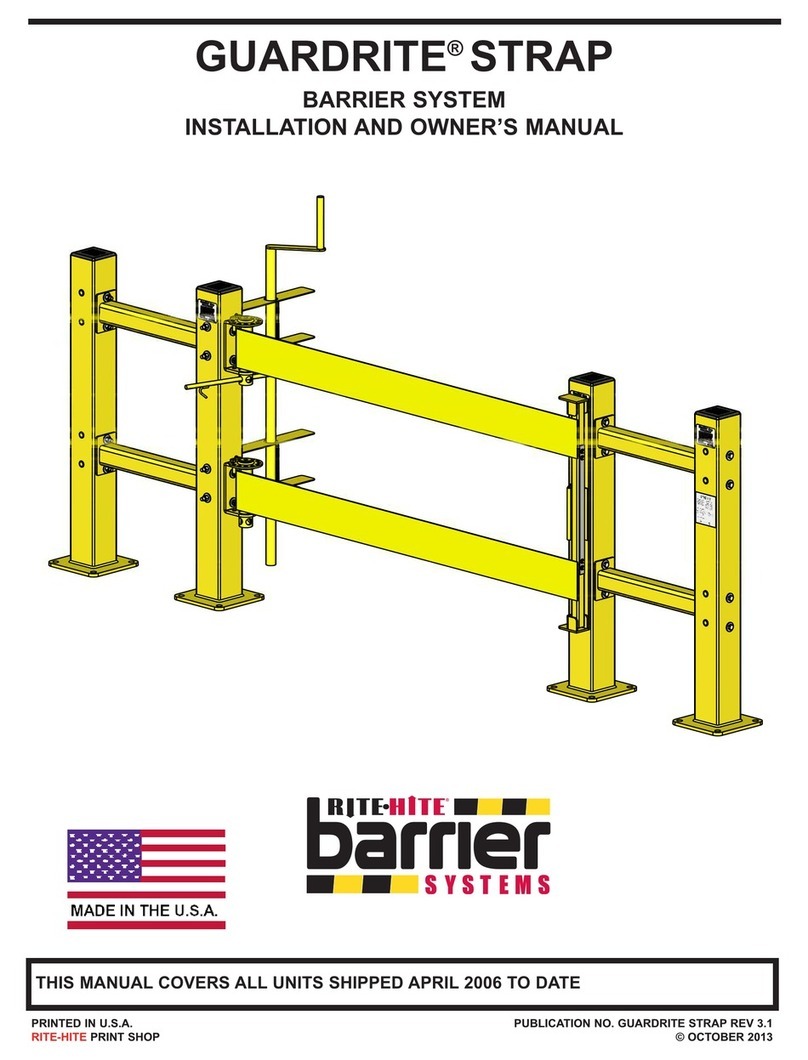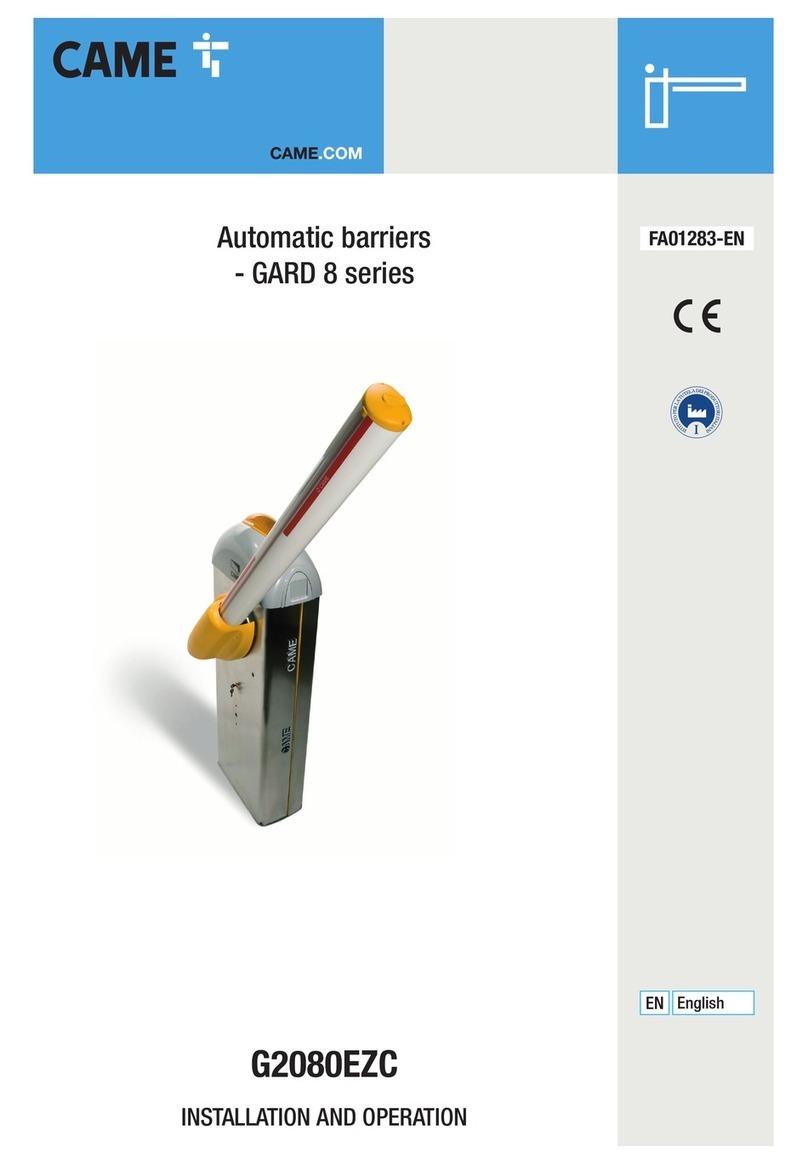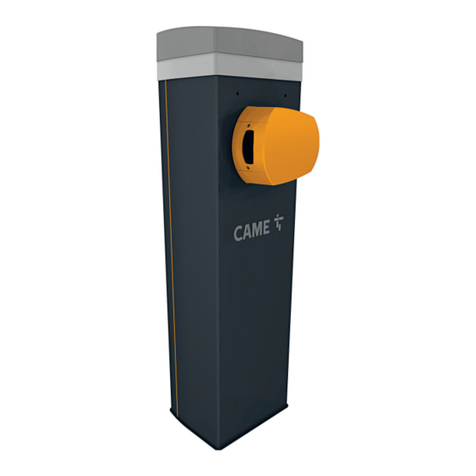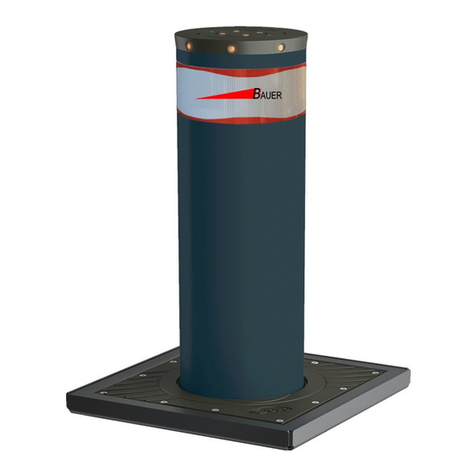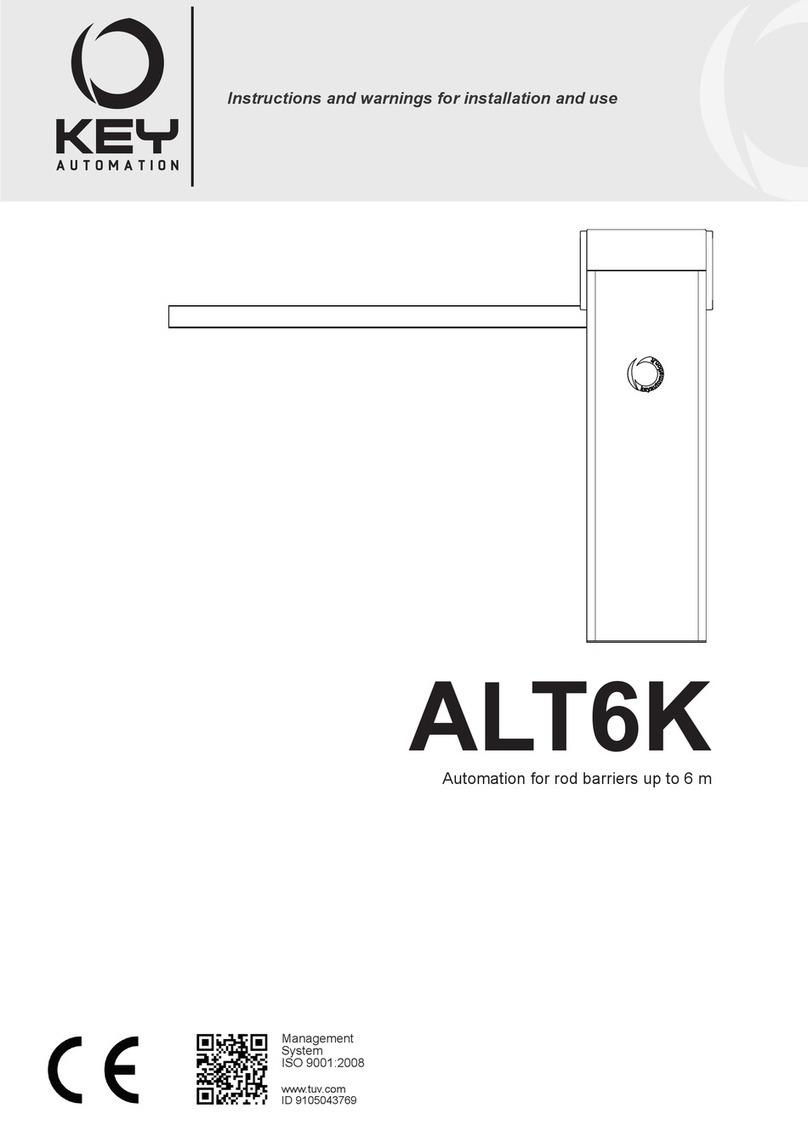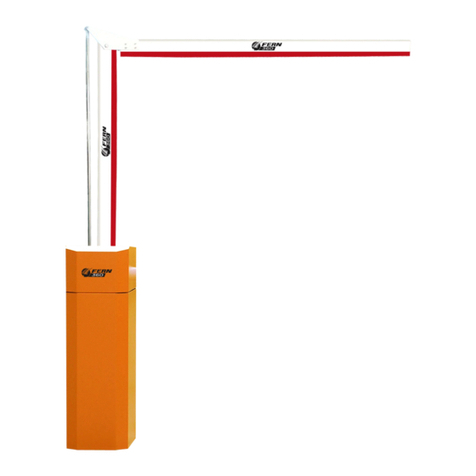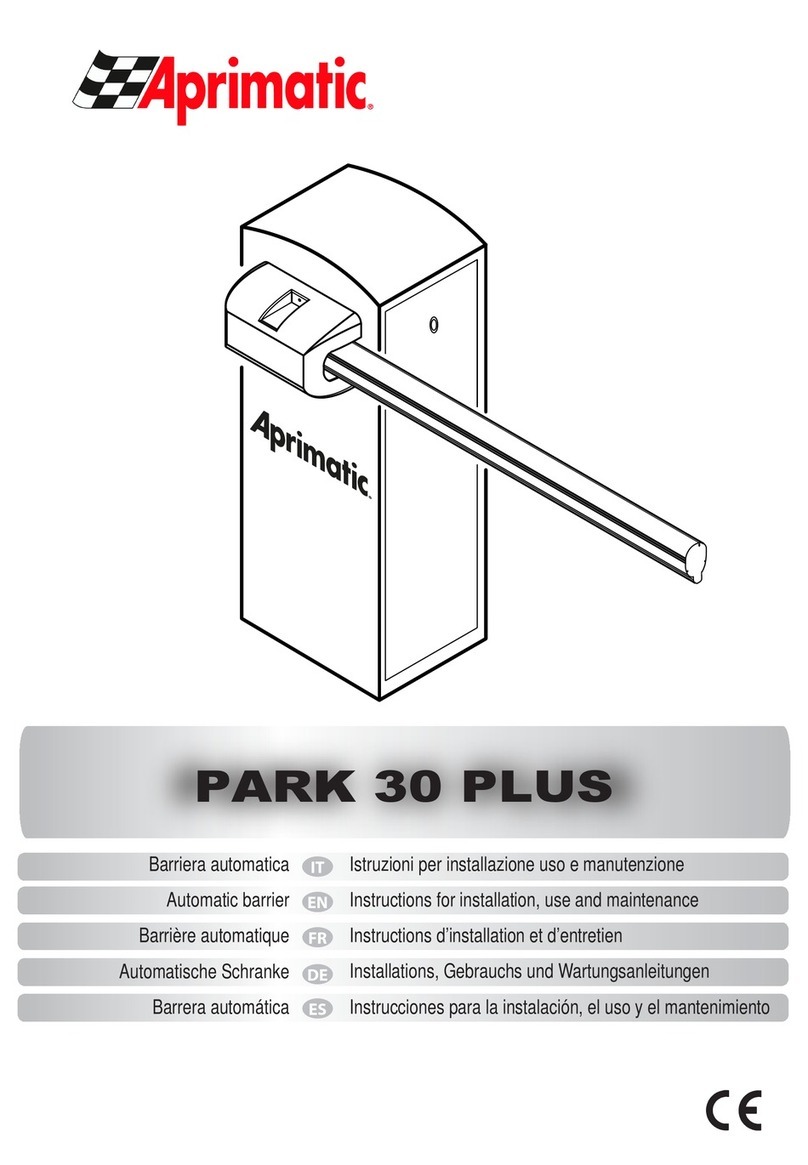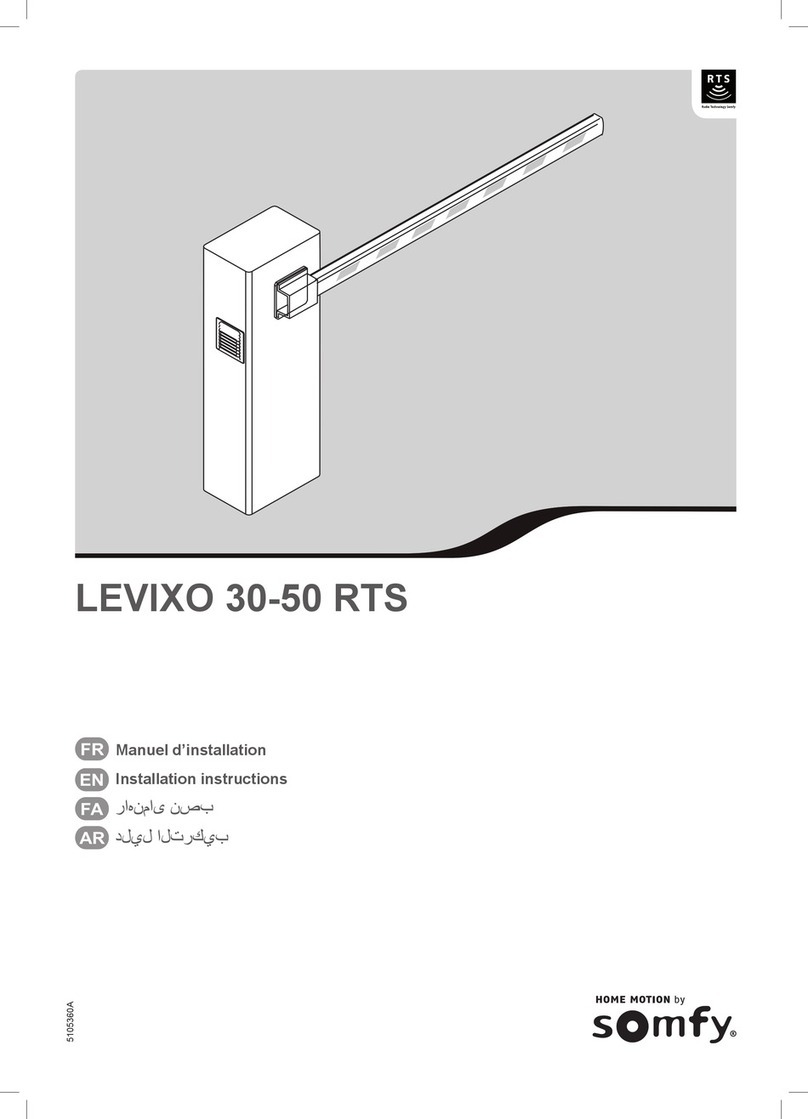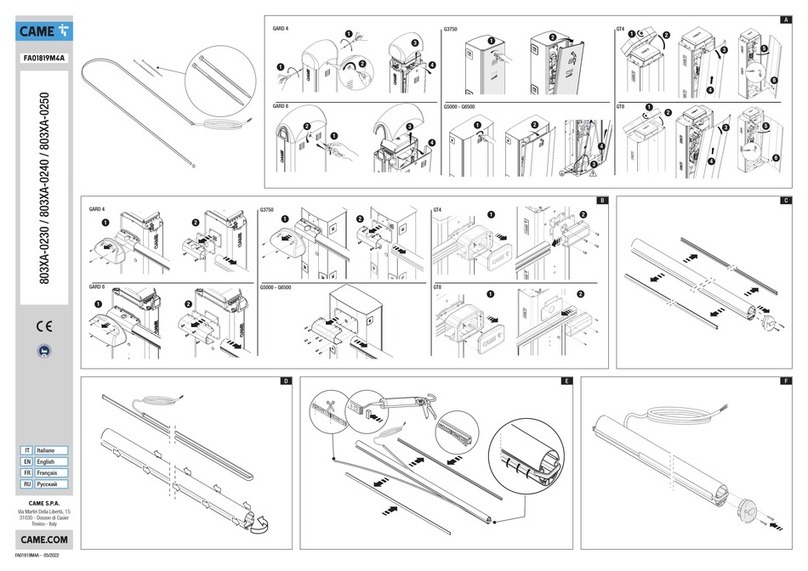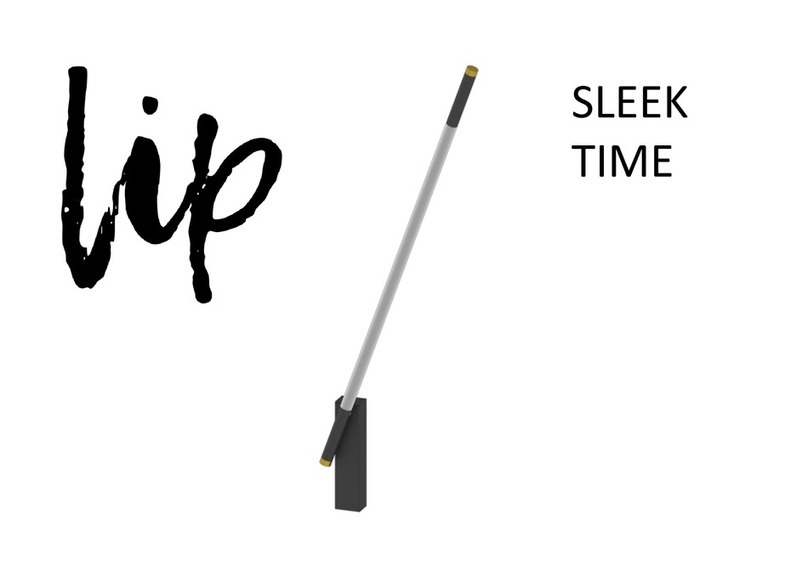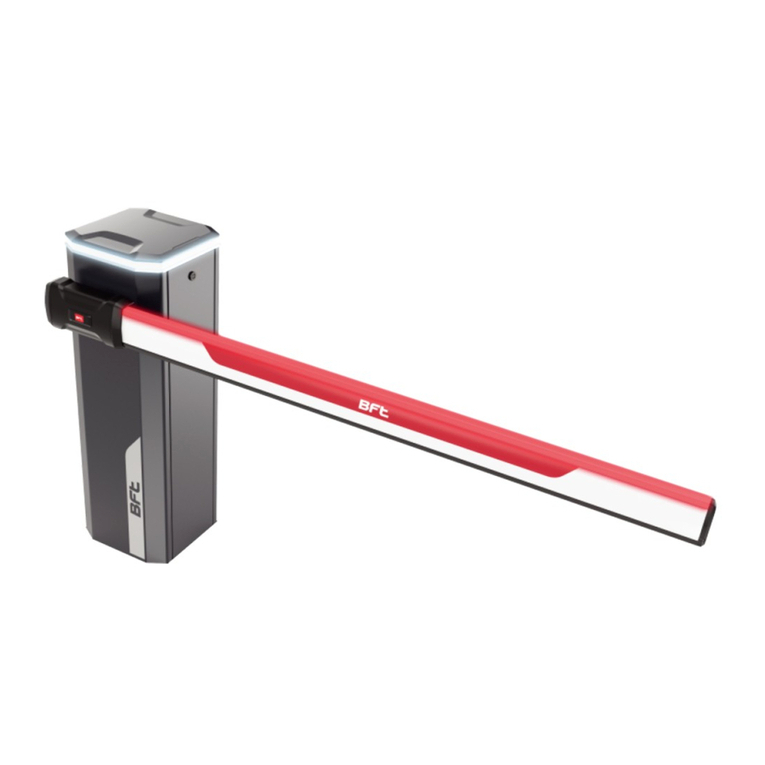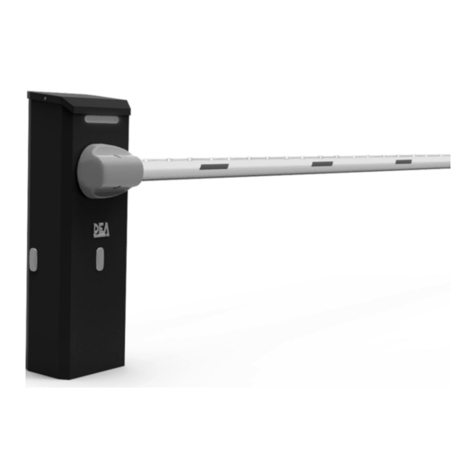
LEVIXO 30/50 230V RTS FR
3Copyright©2017 SOMFY ACTIVITES SA. All rights reserved.
AVERTISSEMENT
Toute utilisation de ce produit hors du domaine d’application
décrit dans cette notice est interdite (voir paragraphe
«Domaine d’application» du manuel d’installation).
L’utilisation de tout accessoire ou de tout composant non
préconisé par Somfy est interdit - la sécurité des personnes
ne serait pas assurée.
Tout irrespect des instructions figurant dans cette notice exclut
toute responsabilité et garantie de Somfy.
Si un doute apparaît lors de l’installation de la motorisation ou
pour obtenir des informations complémentaires, consulter le site
internet www.somfy.com.
Ces instructions sont susceptibles d’être modifiées en cas
d’évolution des normes ou de la motorisation.
1.3.Vérifications préliminaires
1.3.1.Environnement d’installation
ATTENTION
Ne pas projeter d’eau sur la motorisation.
Ne pas installer la motorisation dans un milieu explosif.
Vérifier que la plage de température marquée sur la
motorisation est adaptée à l’emplacement.
DANGER
MISE EN GARDE : Toute intervention sur les ressorts de la
barrière peut représenter un danger.
1.3.2.Spécifications de la barrière à motoriser
Après installation, s’assurer que les parties de la barrière
n’empiètent pas sur les trottoirs ou sur la voie publique.
1.4.Installation électrique
DANGER
L’installation de l’alimentation électrique doit être conforme
aux normes en vigueur dans le pays où est installée la
motorisation et doit être faite par un personnel qualifié.
La ligne électrique doit être exclusivement réservée à la
motorisation et dotée d’une protection constituée :
• d’un fusible ou disjoncteur calibre 10A,
• et d’un dispositif de type différentiel (30mA).
Un moyen de déconnexion omnipolaire de l’alimentation
doit être prévu. Les interrupteurs prévus pour assurer
une coupure omnipolaire des appareils fixes doivent être
raccordés directement aux bornes d'alimentation et doivent
avoir une distance de séparation des contacts sur tous les
pôles pour assurer une déconnexion complète dans les
conditions de catégorie de surtension III.
Les câbles basse tension soumis aux intempéries doivent
être au minimum de type H07RN-F.
L’installation d’un parafoudre est conseillée (de tension
résiduelle d’un maximum de 2kV).
Passage des câbles
Les câbles enterrés doivent être équipés d’une gaine de protection
de diamètre suffisant pour passer le câble du moteur et les câbles
des accessoires.
Pour les câbles non enterrés, utiliser un passe-câble qui
supportera le passage des véhicules (réf. 2400484).
1.5.Précautions de manutention
Utiliser les moyens de manutention adaptés (forme,
encombrement et poids de la charge) par exemple un diable de
transport.
1.6.Précautions vestimentaires
Enlever tous bijoux (bracelet, chaîne ou autres) lors de
l’installation.
Pour les opérations de manipulation, de perçage et de soudure,
porter les protections adéquates (lunettes spéciales, gants,
casque antibruit, etc.).
1.7.Consignes de sécurité relatives à l’installation
DANGER
Ne pas raccorder la motorisation à une source d’alimentation
avant d’avoir terminé l’installation.
DANGER
L’installation d’une barre palpeuse active avec auto-test
est obligatoire afin de permettre la mise en conformité de
l’installation.
AVERTISSEMENT
S’assurer que les zones dangereuses (écrasement,
cisaillement, coincement) entre la partie entraînée et les
parties fixes environnantes dues au mouvement d’ouverture
de la partie entraînée sont évitées ou signalées sur
l’installation.
AVERTISSEMENT
N'installer la béquille que si l'accès est interdit au piéton.
AVERTISSEMENT
Il est strictement interdit de modifier l’un des éléments
fournis dans ce kit ou d’utiliser un élément additif non
préconisé dans ce manuel.
Surveiller la barrière en mouvement et maintenir les personnes
éloignées.
Ne pas utiliser d’adhésifs pour fixer la motorisation.
AVERTISSEMENT
Le déverrouillage manuel peut entraîner un mouvement
incontrôlé de la barrière.
Après installation, s’assurer que :
• le mécanisme est correctement réglé
• ledispositif dedéverrouillage manuelfonctionnecorrectement
AVERTISSEMENT
Dans le cas d’un fonctionnement en mode automatique ou
d’une commande hors vue, il est impératif d’installer des
cellules photoélectriques.
La motorisation en mode automatique est celle qui
fonctionne au moins dans une direction sans activation
intentionnelle de l'utilisateur.
Dans le cas d’un fonctionnement en mode automatique ou si la
barrière donne sur la voie publique, l’installation d’un feu orange
peut être exigée, conformément à la réglementation du pays
dans lequel la motorisation est mise en service.
1.8.Consignes de sécurité relatives à l’utilisation
AVERTISSEMENT
Cette motorisation peut être utilisée par des enfants âgés
d’au moins 8 ans et par des personnes ayant des capacités
physiques, sensorielles ou mentales réduites ou dénuées
d’expérience ou de connaissance, s’ils (si elles) sont
correctement surveillé(e)s ou si des instructions relatives à
l’utilisation de la motorisation en toute sécurité leur ont été
données et si les risques encourus ont été appréhendés.
Ne pas laisser les enfants jouer avec la motorisation.
Ne pas laisser les enfants jouer avec les dispositifs de
commande de la barrière. Mettre les télécommandes hors
de portée des enfants.
Le nettoyage et l’entretien par l’usager ne doivent pas être
effectués par des enfants.
AVERTISSEMENT
Tout utilisateur potentiel doit impérativement être formé à
l’utilisation de la motorisation par la personne ayant réalisé
l’installation, en appliquant toutes les préconisations de ce
manuel. Il est impératif de s’assurer qu’aucune personne





